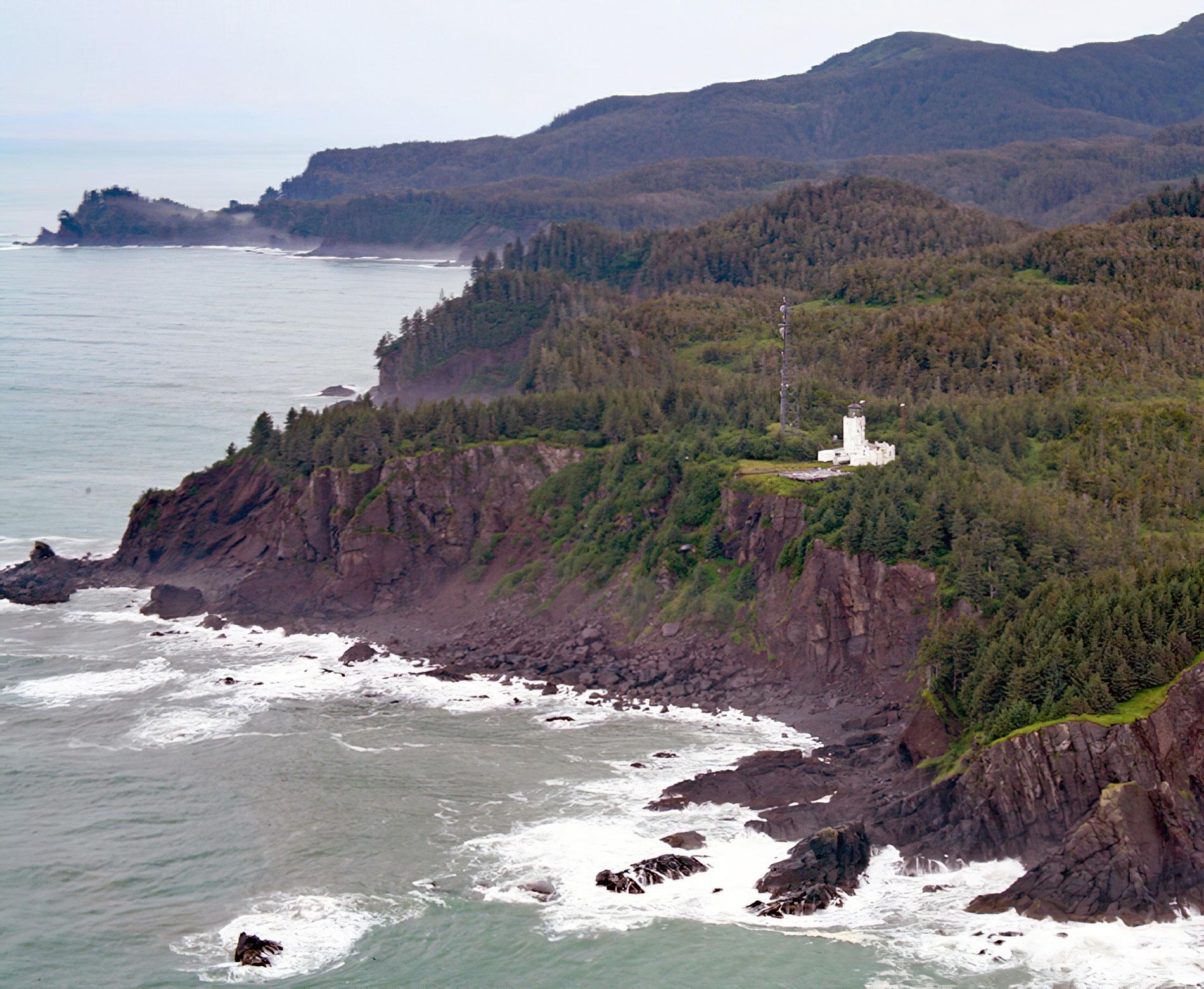Cape Hinchinbrook is a headland with a light station on the southwestern point of Hinchinbrook Island in Prince William Sound, about 79 miles (127 km) southeast of Whittier and 37 miles (60 km) southwest of Cordova, Alaska. The cape was named in 1778 by Captain James Cook for John Montagu, 4th earl of Sandwich, Viscount Hinchingbrooke, Baron Montagu of Saint Neots. Hinchinbrook Island forms the eastern shore of Hinchinbrook Entrance which is the primary maritime corridor for Prince William Sound and vessels bound to and from Valdez. The geology of western Hinchinbrook Island is represented by a thick sequence of turbidites consisting of sandstone, siltstone, and mudstone. These turbidites were deposited from sediment gravity flows, chiefly turbidity currents, on a submarine fan complex during the late Paleocene to Eocene epoch and now comprise the Orca Group of rocks in the Chugach-Prince William composite terrane.
On September 13, 1906, the steamship Oregon, operated by the White Star Steamship Company and under the command of Captain Horace E. Soule, was on a voyage from Seattle to Valdez. That day the ship was en route from Katalla to Orca with 53 passengers and 68 crewmembers, and about 790 tons of freight. Due to wind, darkness, and rain squalls, the ship ran aground 3 miles (5 km) from Cape Hinchinbrook. The point of land had long been a menace to navigation, and just a few months prior to Oregon’s accident, a Congressional act had authorized funds for the construction of a light and fog signal station for Cape Hinchinbrook. Providently, the U.S. Lighthouse Tender Columbine was surveying the area for the pending construction of the lighthouse and picked up passengers and crew from 5 lifeboats and proceeded to the wreck and took off the remaining crew, all mail, and baggage, and safely deliver them to Valdez the next day. The ship was a total loss and the master was exonerated from all blame.
President Theodore Roosevelt established the lighthouse reservation on Hinchinbrook Island by executive order in 1906, but the lighthouse was only partially funded and construction was delayed until 1909. Cape Hinchinbrook was the last light station constructed during the massive expansion of navigation aids spurred by the gold rushes in the Klondike and Nome. At the time, Prince William Sound did not represent a main corridor to the interior of Alaska and the gold fields; however, with the development of copper mines at Kennecott, the area gained significant importance. Cape Hinchinbrook Lighthouse was first lighted on November 15, 1910. Due to earthquakes in 1927 and 1928, which caused instability in the cliff around the lighthouse, a new light had to be built on solid rock. The current structure was completed in 1934 with a light 67 feet (20 m) high on an octagonal tower with a concrete foundation. Other buildings included an oil house, a carpentry and machine shop, and a tram hoist house, all perched about 180 feet (55 m) above the water near a sheer rocky cliff. The lighthouse was automated in 1974 and a solar-powered Vega lens was installed. The original third-order Fresnel lens is now on display at the Valdez Museum and Historical Archive in Valdez. Read more here and here. Explore more of Cape Hinchinbrook and Hinchinbrook Island here:

